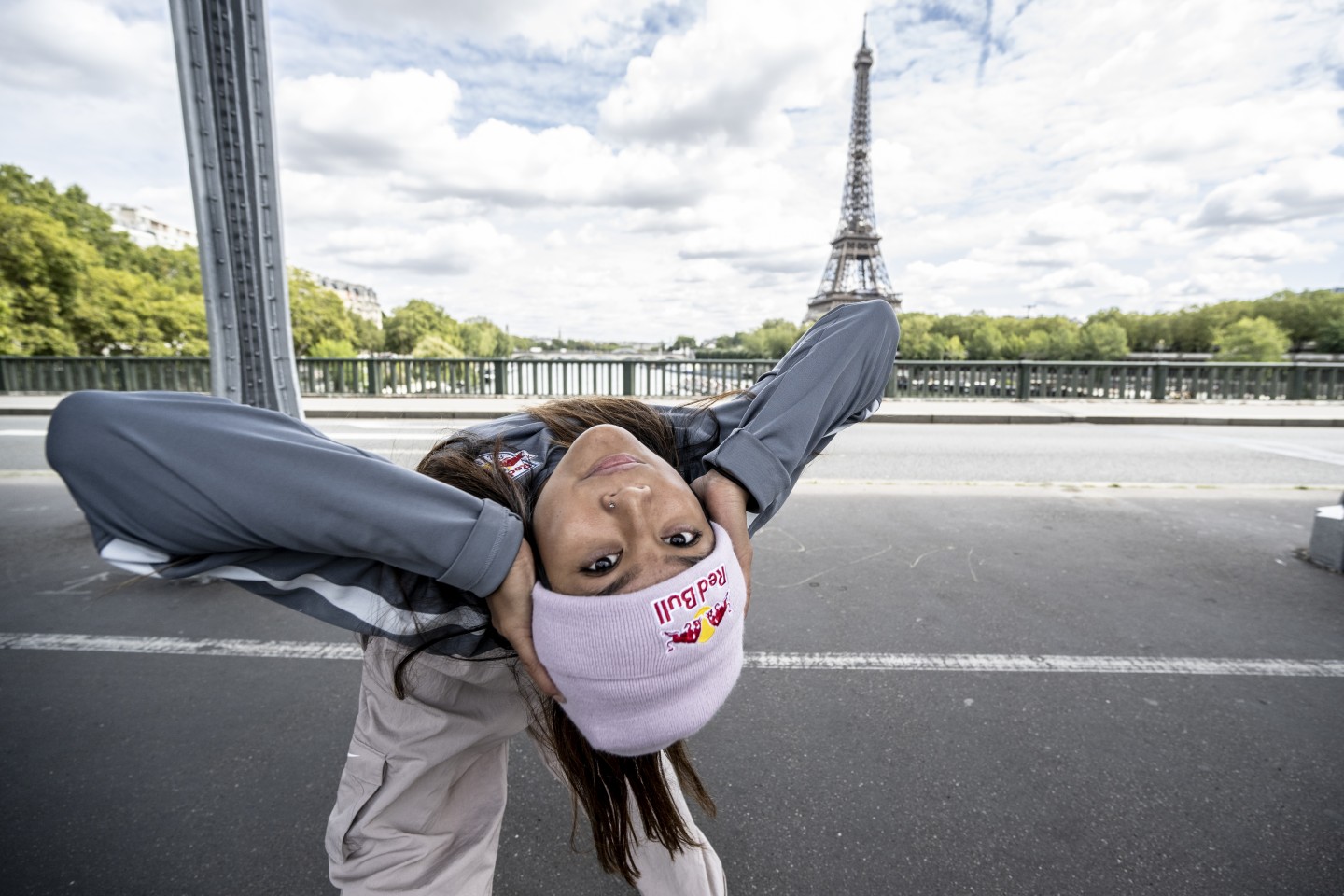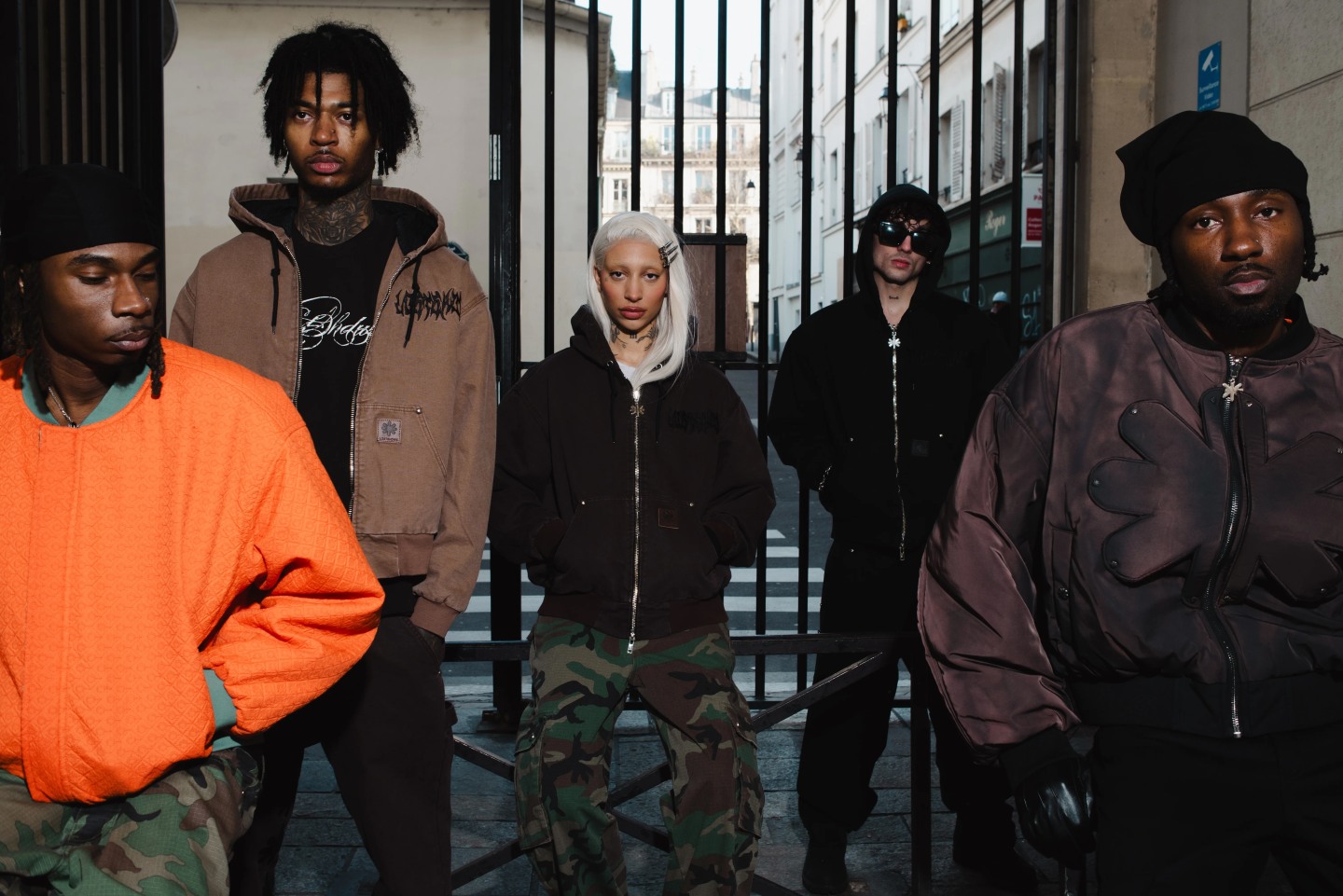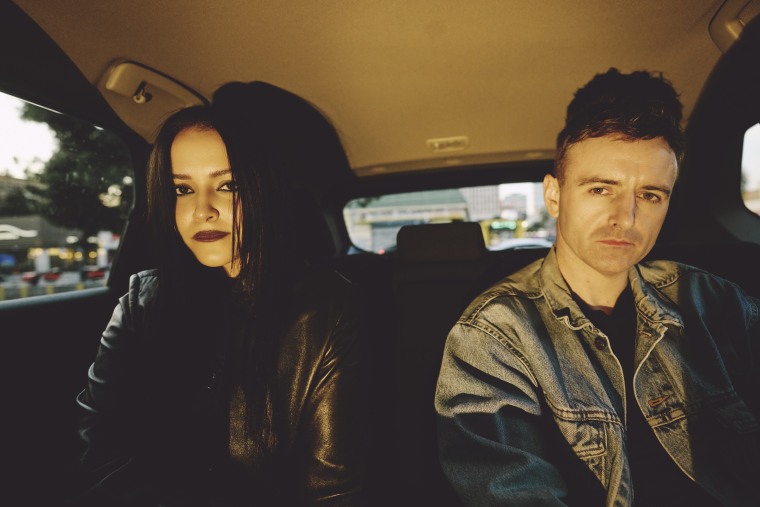Logistx
Dean Treml
/
Red Bull Content Pool
Logan Edra looks oddly serene for someone with the “crazy responsibility” of breaking, or breakdancing, for Team U.S.A. at the 2024 Olympics. Better known as b-girl Logistx, the 21-year-old is one of four dancers representing the United States in breaking’s controversial debut at the Paris Games, and they’re under an unusual amount of pressure to bring home the gold. Yet Edra remains the picture of calm over our Zoom call, gaze soft and expression completely relaxed even while acknowledging that “everyone’s kind of looking at us.”
Born in Chula Vista, California, to Filipino immigrants, Edra was a shy kid who found it easier to open up and express herself through gymnastics, ballet, and jazz dance. Both her parents worked extremely hard to provide for her, but money was tight and the family was often in “survival mode,” meaning her dance lessons eventually became too expensive.
But her father recognized that there was something special about the way she danced, tackling complex footwork and hyper-precise choreography with a natural grace and seamless fluidity. As a big hip-hop fan who always played A Tribe Called Quest and Lauryn Hill, he was also familiar with breaking, which is why he’d take the 7-year-old prodigy to freestyle jams run by the local Pinoy b-boy scene.
Edra essentially grew up at these jams, working with veteran dancers to perfect her head spins, freezes, and coin drops, while slowly building up her reputation as “the face of Filipino breaking.” And jams kept her busy so she wouldn’t “get into trouble when shit started happening at home,” like her mother leaving when Edra was just 10.
“It was hard,” Edra says, adding that she was encouraged to keep busy with hardcore workouts and near-constant training. But the “immense pressure” would sometimes leave her feeling “robotic,” denying her the “spiritual release” she craves and draining her of the “soulfulness” that defines her dance style.
“It got intense really fast,” she recalls, though she cringes when likening it to “putting a Band-Aid on that trauma.”
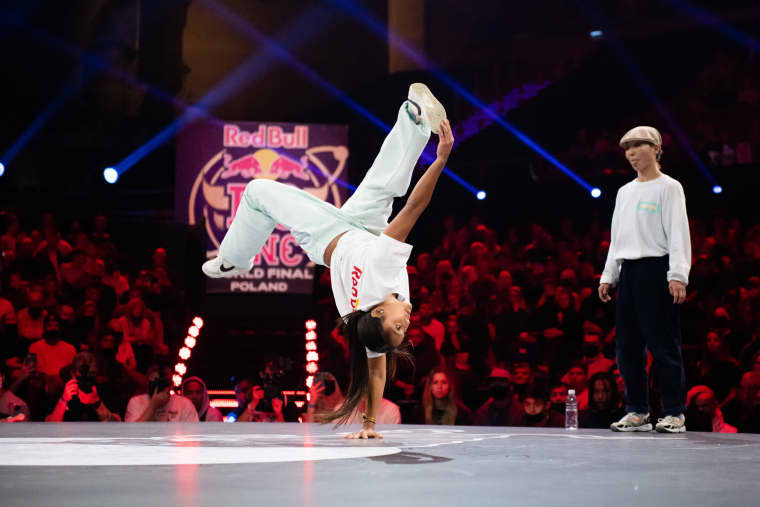
Red Bull Content Pool
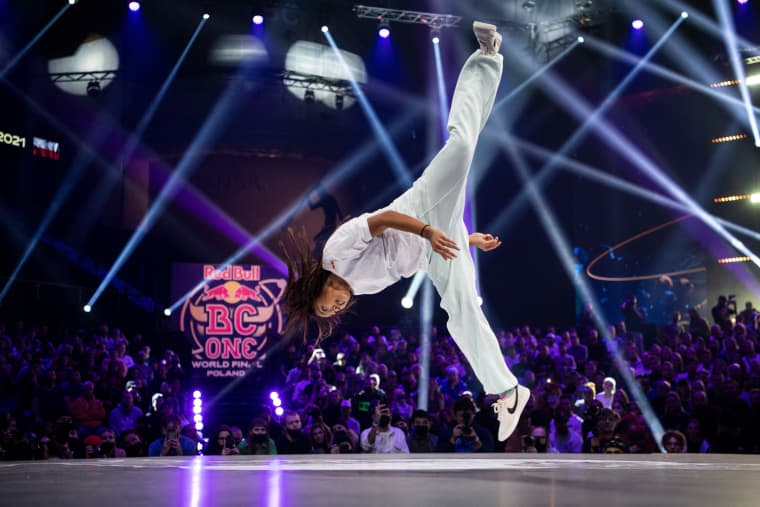
Red Bull Content Pool
She gives me a knowing look, the one that some Asian-American kids give each other when they talk about their “strict” traditionalist parents. I nod along, listening to Edra vent about her father never allowing her to do anything except train and practice, which she was able to use to her advantage by joining her first crew at 15.
“I was just going through it,” she says – though that pressure just made her “want to dance even more.” Despite being the youngest by far, Edra felt like she’d finally found a circle of friends that she describes as “healthy brothers and sisters who were always supporting me.”
“Then, it got to a point where I was just like, ‘Yo, I can’t be here, I can’t be home, like, I gotta go,’” she says. There’s a brief pause.. “It became an unsafe environment for me,” she admits.
The next year, at age 16, Edra moved to her mother’s home in Miami. She needed to “restart and heal.” She felt lost, scared of the future, struggling with complicated feelings towards dance. But when the pandemic shut the world down, Edra says she had time to do some inner work, which helped her come out on the other side with a renewed sense of purpose.
As she continued to heal, she began to dance more, joining a new crew and immersing herself in Miami’s breaking scene through BREAKINMIA, where she’s been teaching young b-girls how to break into the hip-hop dance world themselves.
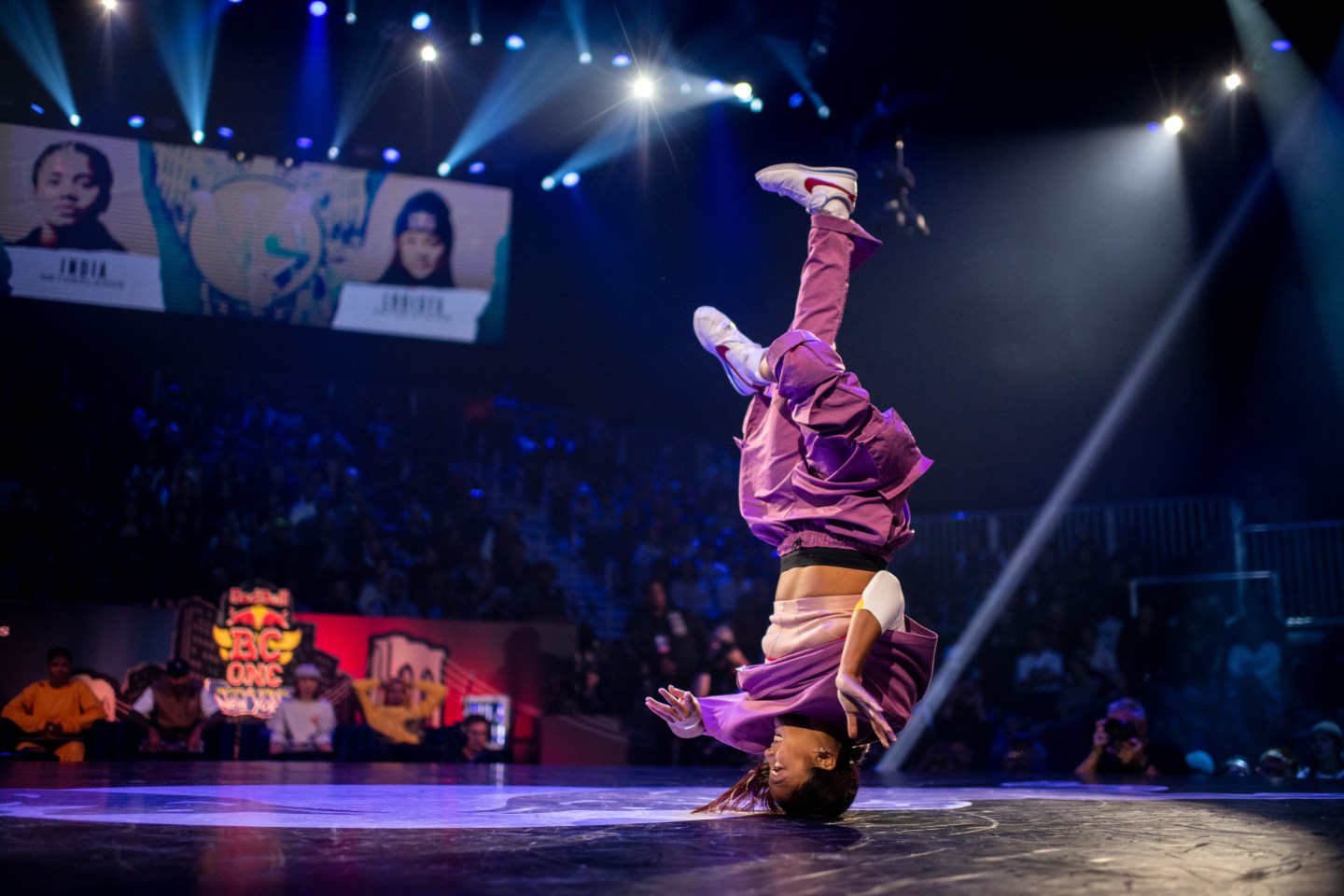
Romina Amato
/
Red Bull Content Pool
Edra has always been known for her “toprock,” or a series of opening moves that allow her to show off her flexibility and coordination through ripcord hip twists that make for a smooth transition into flashy “downrock” floor choreography, peppering her basic 6-step rotations with acrobatic spins, momentum-based power moves, and gravity-defying freezes.
She says she’s best known for her “hollowback freeze,” a complicated backwards bend where her feet don’t touch the floor. Unsurprisingly, she’s used it plenty of times to impress judges at major international events, like Singapore’s 7ToSmoke Radikal Forze Jam and the prestigious Red Bull BC One B-Girl championship, where she took home the title in 2021.
Unless directly questioned though, Edra never brings up her long list of awards and accolades, preferring to talk about how breaking makes her feel. Much more than just a sport, Edra believes breaking is a form of deep spiritual and artistic expression, requiring a combination of dedicated practice, creative improvisation, and intuitive movement that gets into a flow state.
When she’s in that mindset, it becomes easy to connect with the rhythms of both Wu-Tang Clan classics, a scrappy Soundcloud mix with “a little groovy soulfulness,” and a few “big power moves” for good measure. She grows increasingly excited when rattling off a list of her most “dynamic” moves: her favorite flips, the arched back freezes, and sky-high flash kicks. The latter is inspired by Street Fighter II’s Chun-Li, who’s one of several characters she can “channel the energy and style of” during a cypher, alongside funk great James Brown, martial arts legend Bruce Lee, and contemporary dancers like Martha Graham.
That mix of high and low influences exemplifies the controversies around breaking’s Olympic debut. The latest entry doesn’t require access to a well-trained horse or a fencing gym. It’s a foundational pillar of hip-hop, and is still primarily associated with low-income Black and brown troublemakers (and Channing Tatum in Step Up) in the cultural consciousness.
Breaking emerged as a pop cultural phenomenon in the early ‘80s with the help of Rock Steady Crew, a group of second-generation b-boys whose members included famed dancers like Crazy Legs, Ken Swift, and Mr. Freeze. After appearing in major motion pictures like Flashdance, Beat Street, and Wild Style, the crew also produced a global hit called “(Hey You) The Rock Steady Crew,” catching international attention with their acrobatic prowess and imposing “power moves.”
Breaking was invented by Black and Puerto Rican crews from the South Bronx during the ‘70s, according to Jonathan Abrams, a New York Times culture reporter and the author of The Come Up: An Oral History of the Rise of Hip-Hop. Alongside emceeing and graffiti, breaking is considered one of the “four pillars of hip-hop.” Granted, it’s most closely associated with the pillar of turntablism, with Abrams pinpointing Kool Herc’s “discovery of ‘breaks’” and breakbeats as a foundational moment in hip-hop history.
“Everybody used to wait for these breaks,” Abrams explains, referring to the percussive funk interludes that were “only a few seconds long.” But when Herc and other turntablists like Afrika Bambaataa and Grandmaster Flash found a way to “stretch out” these instrumental sections into breakbeats, it meant people were finally able to “actually get down” and local gang could settle disputes in a non-violent way via cypher dance battles. Breaking has always been “street” in the proletarian sense, a purely corporeal sport that’s since been adopted by disenfranchised POC youth in France, Germany, Senegal, and, in Edra’s case, the San Diego Metro Area.
Over the next fifty years, crews formed in countries like France, Germany, Senegal, and Japan, mostly comprised of minority youth. In the eyes of the International Olympic Committee (IOC), however, breaking’s presence at the 2024 Olympics could appeal to a younger audience, bored by a 128-year-old event typically associated with elitist tradition and ceremonial formality.
That said, the IOC’s decision has been rubbing old-school athletes and narrow-minded fans the wrong way, with some going so far as to brand its inclusion in the Games a “mockery” and something that “just doesn’t seem to fit” with the rest of the Olympic Games. But breaking’s inclusion as an Olympic sport has also created a divide within the breaking community, who consider it an artform “created with our own terminology and heritage and tradition,” Ken Swift told Sports Illustrated.
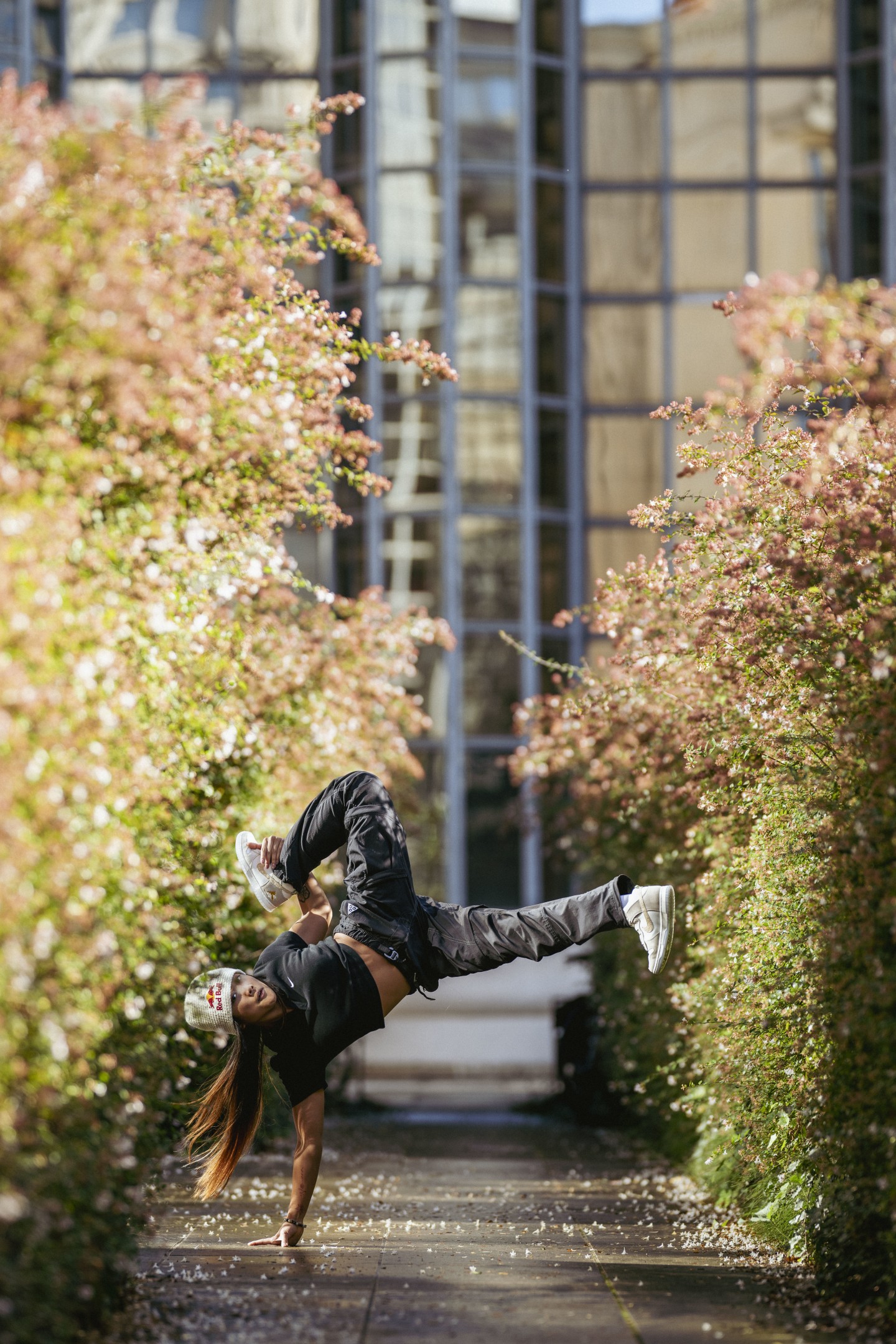
Little Shao
/
Red Bull Content Pool
“I love sports. I get that. But when I was breaking, the whole aspect of doing stuff with my body — the type of freedom, really connecting to drums and music — was different for me,” Swift said. “A lot of people act like I’m a hater, but they’re wrong. It’s just that I have a culture I’m a part of called hip-hop, and it ain’t going to change.”
While Edra agrees with Swift’s sentiment, she knows the athleticism that goes into breaking and believes that the presence of b-girls in the Olympics will have a huge impact on “other young girls who want to break.”
“It’s hard to break at a young age,” she says. Beyond the gold, she cares about showing aspiring dancers that they can be just as good as the boys in what’s primarily a male-dominated field. But while the frequent use of “sexual burns” and harassment can make things “more intimidating,” Edra says that breaking is far from the only place where sexism and misogyny occur.
Even as one of the best breakers in the world, there will be times when you have to bite your tongue, she warns. Luckily, there’s a growing group of strong b-girls who don’t have any qualms about making themselves visible, both within the Olympics and the breaking scene itself.
“Just to be a breaker is not easy, and to be a young female in it is even harder,” she says. “So I think every time I have a difficulty, I have to keep working. It’s not about me, but more about what I’m going to be able to share with others moving forward.”
Edra arranges herself into lotus pose, crossing her legs and relaxing her arms to mirror the figure on the multicolored chakra wall hanging behind her couch.
“‘Cause you’re strong, and it shows through the dance when you’re fucking smoking the guys out, and they can’t say nothing,” she says. “It’s just demanding that respect.”
Edra gives me a mischievous smile, though her voice remains even and calm: “And then they can’t say shit because you just smoked them.”

